Remarkable jet engine blueprints drawn by Sir Frank Whittle during World War II expected to fetch £30,000 at auction
-
•Sir Frank Whittle, a British RAF engineer air officer, is credited with inventing the turbojet engine that influenced the course of World War Two
-
•A collection of 220 drawings and letters that detail the development of the engine will be sold at Bonhams auction house on November 12
-
•The archive is contained in a 'special file' and is said to be one of the most important and complete archives of a technological development
PUBLISHED: 14:32, 22 October 2013 | UPDATED: 16:56, 22 October 2013
A unique archive charting the wartime development of the jet engine by the pioneering engineer Sir Frank Whittle is expected to fetch up to £30,000 at auction next month.
Sir Frank, a British RAF engineer air officer, is credited with single handedly inventing the turbojet engine - one of the major technological developments of the 20th century.
The archive, which consists of around 220 drawings, blueprints, specifications, memoranda and letters, effectively tells the story of how it was developed during the crucial period in the early years of the war.
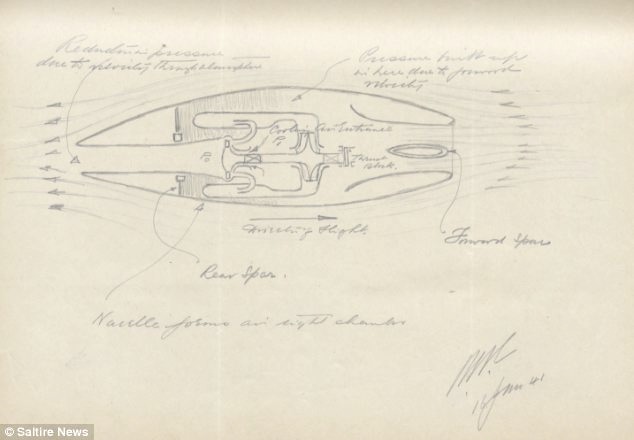
A unique archive charting the wartime development of the jet engine by the pioneering engineer Sir Frank Whittle is expected to fetch up to £30,000 at auction next month. This sketch of how the engine would work (pictured) is among the papers for sale
It will be sold at Bonhams' sale of Books, Maps, Manuscripts and Historical Photographs in London on November 12, when experts expect it to fetch between £20,000 and £30,000.
Bonhams specialist Matthew Haley said: 'This is one of the most important and complete archives on a technological development which has shaped all our lives.
'It is a fascinating insight into the often tortuous way in which an idea takes shape and progresses through trial and error against the backdrop of the misunderstandings and professional frustrations common to any project.'
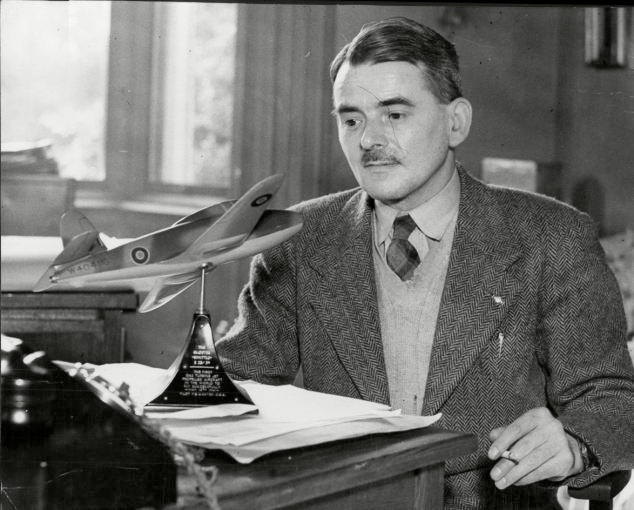
Sir Frank, a British RAF engineer air officer, is credited with single handedly inventing the turbojet engine - one of the major technological developments of the 20th century
The development of the jet engine influenced not only the course of World War Two but underpinned the huge expansion of commercial aviation in the post war period.
It enabled planes to fly at high altitude and at speeds of over 500 miles per hour for the first time.
A 2002 BBC poll of the 100 Greatest Britons ranked Sir Frank at number 42.
The archive is contained in a 'special file,' which belonged to Henry Nathan Sporborg, who was senior director and chief engineer of British Thomson-Houston.
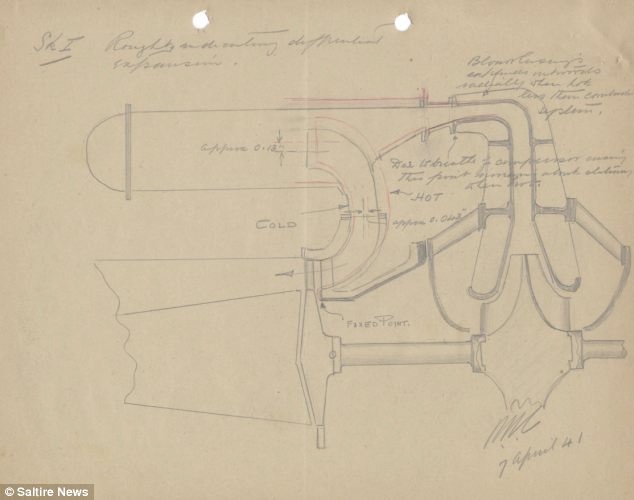
The archive, which consists of around 220 drawings including this one, blueprints, specifications, memoranda and letters, effectively tells the story of how it was developed during the crucial period in the early years of the war
The company manufactured the engine for Frank Whittle and Power Jets Ltd, under contract from the Air Ministry, between January 1940 and June 1941.
Sir Frank had been working on his idea of a jet engine since 1930 and with financial backing, had established the company, Power Jets Limited, to develop the idea further.
He attracted no interest from the War Ministry, however, until the late 1930s when the combination of the threat of war and the technological advances which Whittle was able to demonstrate changed official minds.
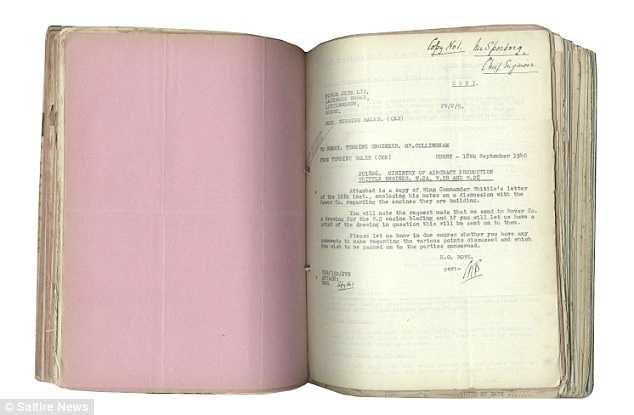
The development of the jet engine influenced not only the course of World War Two but underpinned the huge expansion of commercial aviation in the post war period. Pictured is a letter from the Ministry of Aircraft Production
By 1940 the Ministry was writing to Mr Sporborg emphasising the importance of the work.
One extract from the papers that will be sold, said: 'I hope that if you are fully aware of the great importance that the Air Ministry attach to the development of this Whittle engine you will take all steps in your power to ensure that no unnecessary delay occurs in the completion of these engines and that you will do all in your power to assist Power Jets Limited in their work.'
Sir Frank's genius lay in realising that propeller engines, with their hundreds of complicated working parts, were approaching the limit of their capacity.
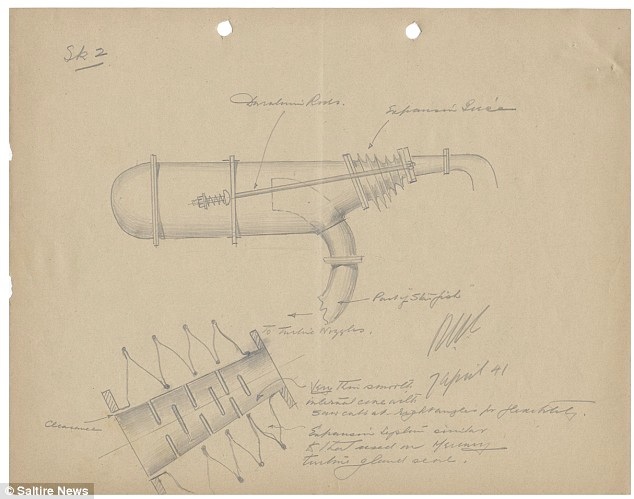
Another intricate drawing by Sir Frank Whittle showing the workings of the jet engine. His genius lay in realising that propeller engines were approaching the limit of their capacity. To enable planes to fly at speeds of over 500 miles per hour he proposed using a variant on the internal combustion engine with the hot gases used for propulsion
SIR FRANK WHITTLE'S JOURNEY
To enable planes to fly at high altitude and at speeds of over 500 miles per hour he proposed using a variant on the internal combustion engine, which directly heats the air by combusting fuel, with the resultant hot gases used for propulsion.
With far fewer components than propeller engines this also had the advantage of being much simpler to maintain.
Sir Frank is reported to have said: 'Reciprocating engines are exhausted. They have hundreds of parts jerking to and fro and they cannot be made more powerful without becoming too complicated.
'The engine of the future must produce 2000 horsepower with one moving part: a spinning turbine and compressor.'
His work was developed some years earlier than that of Germany's Dr Hans von Ohain who was the designer of the first operational jet engine.
Each worked separately and knew nothing of the other's work.
Whittle was the first to register a patent for the turbojet engine in January 1930, while Mr von Ohain was granted a patent for his turbojet engine in 1936.
However, Mr von Ohain's jet was the first to fly in 1939 - Sir Frank's jet first flew in in 1941.
Sir Frank, who was born in Earlsdon, Coventry, retired from the RAF in 1948, was a founding member of the Royal Academy of Engineering and received a knighthood. He later relocated to America and died in 1996 at his home in Columbia, Maryland.
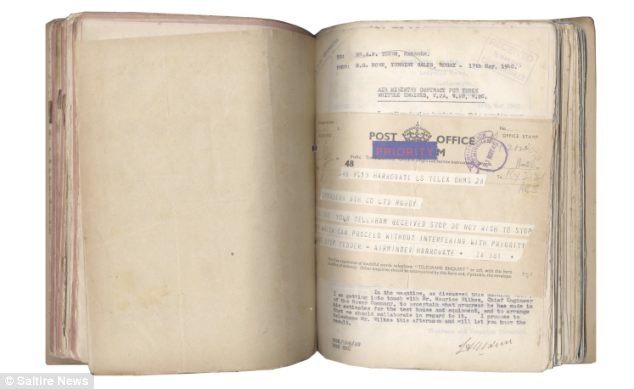
Sir Frank's work was developed some years earlier than that of Germany's Dr Hans von Ohain who was the designer of the first operational jet engine. Whittle was the first to register a patent for the turbojet engine and his jet flew in 1941. This image shows a telegram telling the engineer to proceed with production of the engines